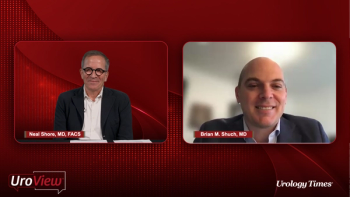
A Closer Look at the Impact of Integrated, Urology-Specific Software on Practice Management
Dr. John J. Kowalczyk identifies the features of integrated, urology-specific software systems that have the largest impact on the management of his practice.
Episodes in this series

John J. Kowalczyk, DO, FACOS: How might urology-specific integrative software impact our productivity and improve our practice management? Here are some of the features we’ve noticed. For the most part, our basic login system integrates our EHR [electronic health record] patient management and the billing tools. This has been the most significant impact. It has eliminated the loss of information and reduced the duration of paperwork completion to payment. It also promotes communication for those within our system, not with the patients. This is our own system. It’s instantaneous. We might get 60 to 100 intraoffice mails in a single day. Communicating now is different from the old days. I’m getting up there in my age. In my day, we would walk over to each other and have vocal communication face to face, and eye-to-eye contact. Now, it has become basic, quick, simple, instantaneous communication.
From that standpoint, the least important component of the integrated system for our practice would be the patient access to creating an encounter. I say this is for several reasons. Sometimes we’ve tried it and it’s not a service that would work for our population at this time. I’m not saying that it wouldn’t be useful in the future. The language barrier initiates the situation. When it comes to patients coming in for procedures, they’re scheduled in a very different fashion. That’s something that usually requires an MD [doctor of medicine] or another member of the team to help with the communication. This isn’t just putting in a date and time for an appointment. It’s completing the preparation that may involve something you can’t do or guarantee. Even if you had a pop-up on the computer that the patient would understand or even pay attention to, that pop-up is what expectations we may expect on our part for them to be ready for a procedure in the office.
We talked about streamlining our MIPS [Merit-based Incentive Payment System]. That’s 1 of the first components that our manager noticed. He came into the office, patted himself on the back, and said, “I can do this. I don’t need to go to our billing company.” We used to rely on our biller, and that would take weeks of waiting and lots of paper. I refer to our old billing system as the old-fashioned DOS [disk operating system]. We’d have to wait and wait and wait. The truth is that it really was a DOS-based system. Our previous biller has been around with me for a long time and is using a very old system of billing and coding. Those have been streamlined. We talked about the labs and ordering labs. Prescriptions is the same thing. I mentioned earlier that I’m usually catching up on prescription requests on a Friday evening or an early Saturday morning with my coffee. Those are some of the things that have improved our overall activities.
I still think our least important component is the self-scheduling of patients. On the flip side, for those who are computer savvy, the communications system in the patient portal is another groundbreaking platform for a lot of our patients. In all honesty, we have a very busy practice with a lot of phone calls coming in. We have to subcontract with people in India to help with our telecommunication. This way, a patient can get around to speaking with someone who isn’t necessarily from the office without waiting on the telephone line and listening to, “Please press 1.” Now, they just go in the patient portal and type a message. It pops up instantaneously. If I have a moment or 2, I’ll respond. An example would be when a patient this week was still traveling in the United Kingdom and ran out of a certain medication. There’s a similar medicine in the United Kingdom. The patient wanted to know if that would be OK until he or she came back. The answer was given instantaneously, even though we’re in 2 different time zones: Pacific time vs the time in the United Kingdom. It works out beautifully.
Those are the things we found to be very beneficial. At the same time, we have 1 or 2 things that we still need to work on. I don’t call it a challenge necessarily. It’s more a work in progress for us to better the ability of our patients to schedule their own appointments. Ideally, the best-case scenario would be to eliminate as many phone calls as possible. It’s been very cool to have people communicate directly through a system that I never thought would be as efficient as it is. I’ve been enjoying that part of medicine more than picking up the phone every time someone calls.
Newsletter
Stay current with the latest urology news and practice-changing insights — sign up now for the essential updates every urologist needs.
















